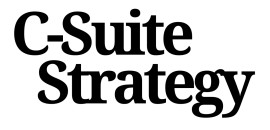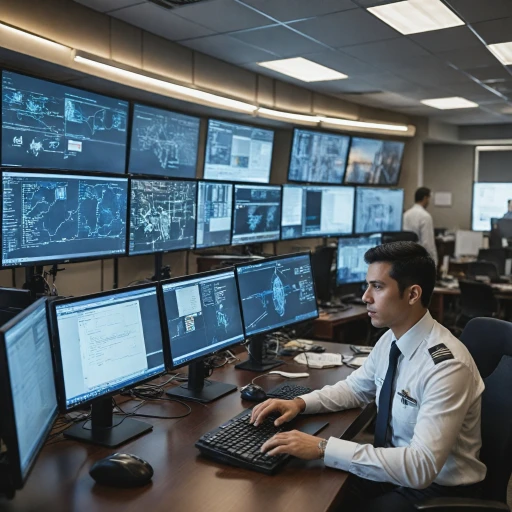
The Importance of Effective Communication in Leadership
Why Communication is a Cornerstone of Leadership
In the realm of executive leadership, effective communication is not just a skill—it's a necessity. The ability to convey ideas clearly and persuasively can significantly impact your team's performance and the overall success of your organization. As executives, mastering the art of communication is crucial for fostering a collaborative environment and driving strategic initiatives forward.
Leadership is often about inspiring and guiding teams towards a common goal. This requires not only a vision but also the ability to articulate that vision in a way that resonates with diverse audiences. Whether you're addressing your team, stakeholders, or the board, your communication skills will determine how your message is received and acted upon.
Building a Strong Executive Presence
Developing a strong executive presence involves more than just public speaking. It's about embodying confidence and authority in every interaction. This presence is cultivated through continuous skills training and practice, ensuring that you can engage and influence your audience effectively. Participating in a tailored coaching program for executives can provide invaluable insights and techniques to enhance your communication skills.
Through targeted training workshops and courses, executives can learn to harness the power of body language, maintain eye contact, and deliver memorable presentations. These elements are essential for establishing credibility and trust, which are the bedrock of effective leadership.
The Role of Feedback in Communication Mastery
Feedback is a critical component of developing advanced presentation skills. By seeking constructive criticism from peers and mentors, executives can identify areas for improvement and refine their communication techniques. This iterative process of learning and adapting is vital for overcoming common presentation challenges and ensuring that your message is impactful.
Ultimately, effective communication is a dynamic skill that evolves with experience and practice. By investing in professional development and embracing continuous improvement, executives can enhance their leadership capabilities and drive their organizations towards success.
Key Elements of Successful Executive Presentations
Unlocking the Characteristics of Compelling Executive Presentations
Delivering an outstanding executive presentation is more than just being able to speak with authority. It involves developing a rich tapestry of presentation skills that can captivate an audience, convey key business insights, and instill confidence among executives. Here's how you can make your executive presentations successful and memorable.- Clear Objectives: Before diving into your presentation, identify the core objectives. Knowing the "why" behind your message ensures you're speaking with purpose and leads to clearer communication of your objectives. When executives understand what they will learn or accomplish, they are more likely to be engaged.
- Structure and Flow: A well-organized presentation maintains audience interest and enhances understanding. Begin by outlining your core messages, then develop a logical flow that ties ideas together seamlessly. This not only helps in smooth delivery but also enables the audience to follow complex information with ease.
- Engaging Content: Craft your content to resonate with the audience. Use storytelling to make it relatable and incorporate data-driven insights for credibility. Remember, participants learn best when content is both informative and engaging.
- Emotional Connection: Strong communication skills include the ability to connect emotionally with your audience. Use eye contact, body language, and vocal variation to project executive presence and empathy. This not only bolsters your message but also ensures it is memorable.
- Adaptability: Be prepared to think on your feet. Increased interaction demands that you can modify your approach based on audience reactions. Whether it’s addressing questions from the floor or reemphasizing a point, being adaptable showcases your leadership agility.
- Confidence and Authenticity: Embodying confidence without coming across as overbearing sets the stage for trust and influence. Stay true to your communication style, as authenticity can deeply impact your audience’s perception.
Tailoring Your Message for Different Stakeholders
Crafting Your Message for Maximum Impact
When delivering an executive presentation, it's crucial to tailor your message effectively for different stakeholders. Every audience has unique expectations and priorities. Understanding these variances can impact the presentation’s success or failure. Here, we delve into the core aspects of customizing your content to suit varied audiences, accentuating its significance in the realm of executive presentation skills.
To ensure that your communication resonates with every member of your audience, it’s essential to consider a few key elements:
- Audience Analysis: Begin with understanding who your audience is. What are their interests? What is their level of expertise on the subject? Tailoring your message starts with knowing your audience's needs.
- Clear Objectives: What do you want the audience to learn or do with the information presented? Establishing clear objectives guides the development of your content and keeps the presentation focused.
- Language Style: Adapt your language and tone to match your audience. For senior executives, adopting a strategic, high-level approach is crucial. Likewise, a workshop or a training course might require a more detailed, coaching-based style.
- Demonstrating Relevance: Link your presentation to the audience's real-world applications. Highlight how the insights and data you present apply directly to their roles or projects.
By refining your message through these lenses, you enhance both your professional communication abilities and your overall executive presence. Moreover, witnessing memorable presentations with clear, tailored messaging, the audience leaves informed and inspired.
These practices are part of broader management training and communication skills development, where executives will learn the art of speaking to various business levels. With continuous improvement and practice, bolstered by feedback, your ability to adapt and inspire your audience will mature, solidifying your leadership role.
Overcoming Common Presentation Challenges
Strategies to Tackle Presentation Hurdles
Public speaking often comes with its unique set of challenges, especially for executives accustomed to being decisive and authoritative. The pressure to deliver high-stakes presentations can weigh heavily, yet overcoming these hurdles is possible with a comprehensive approach encompassing communication skills and understanding audience dynamics.
Firstly, preparation is key. Engaging in a presentation training workshop can significantly aid in honing your presentation skills. Such programs often incorporate management training and executive presence strategies, ultimately providing executives with the confidence they need to present effectively.
Secondly, understanding your audience is crucial. Not all listeners interpret information in the same way, making it vital to gauge your audience's interests and tailor your approach accordingly. This not not only ensures the clarity of your message but also enhances engagement.
Body language often tells its own tale. Maintaining eye contact, for instance, can establish a powerful connection between you and your audience. Equally important is interpreting your audience's responses and adjusting your presentation style accordingly—reacting to visual cues can help personalize the engagement experience.
Finally, learning is a continuous process. Seeking feedback post-presentation and engaging in regular skills training can make a world of difference. Whether through professional coaching or informal peer reviews, these platforms provide valuable insights that foster growth and improvement over time.
By addressing these common presentation challenges with poise and preparation, executives can not only achieve memorable presentations but also inspire confidence in their leadership abilities, creating a ripple effect of success across their teams.
Leveraging Technology for Enhanced Presentations
Enhancing Presentations with Technology
In today's digital era, leveraging technology is paramount in crafting memorable presentations. The way executives integrate technology can significantly elevate their delivery, ensuring that complex ideas are communicated with clarity and precision to their audience.
Integrating presentation technology provides numerous avenues for creativity and engagement. For example, interactive software like Prezi or advanced PowerPoint features can make data visualization more dynamic, helping emphasize key points effectively. This not only bolsters audience engagement but also aids in simplifying intricate business concepts.
Intelligent Use of Multimedia
Videos, animations, and sound can transform typical presentations into compelling narratives that resonate with stakeholders. The incorporation of multimedia elements allows executives to appeal to both the visual and auditory senses, reinforcing critical messages through multiple channels.
An often underutilized technique in executive presentations is real-time audience interaction. By employing tools such as Mentimeter or Slido, presenters can engage with their audience through live polls and Q&A sessions. This not only keeps the audience involved but also provides immediate feedback and insights.
Enhancing Communication Skills Through Training
While technology offers powerful tools, it is imperative for executives to refine their presentation skills continuously. Participating in a presentation training workshop or enrolling in a specialized training course can provide valuable skills training. Emphasizing practical applications, these programs can help participants learn to balance technological tools with effective communication skills.
Ultimately, the blend of advanced presentation technology and polished executive presence offers a powerful strategy for effective leadership communication. By harnessing the right technology, executives can deliver impactful and engaging executive presentations that inspire action and drive business results.














